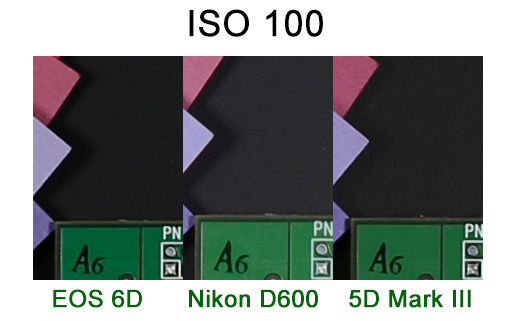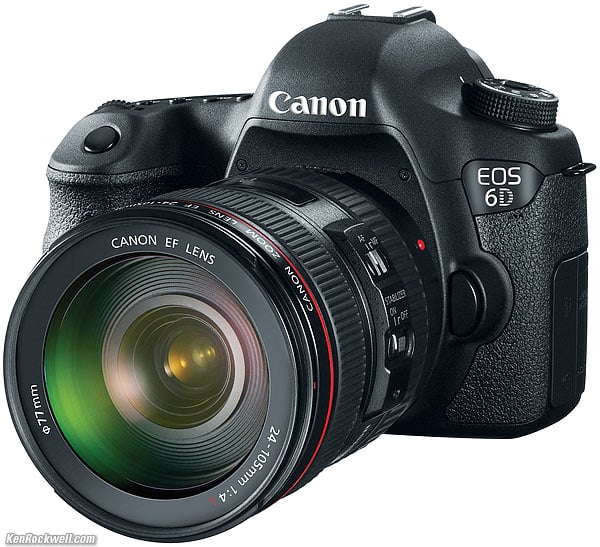

- #CANON 5D MARK III VS 6D II FULL#
- #CANON 5D MARK III VS 6D II PROFESSIONAL#
Built in Flash and GPS: Other differences include the lack of a built in flash on the 5d Mark III, as well as the lack of built in GPS. This feature, which is important to indoor sports photographers, is not found on the 5D Mark III. This results in the image being captured when the lights are not flickering, eliminating dark images. Indoor Photography: One feature that photographers shooting indoor events will appreciate is the ability of the 7D Mark II to synchronize the release of the shutter with flickering fluorescent or sodium lights. This is the result of the 7D Mark II having two of the newest DIGIC-9 processors, which can process data from the sensor to the memory cards quicker than the single DIGIC 5+ processor found in the 5D Mark III. FPS: When looking at the frame rates of each camera, the 7D Mark III is a much faster at 10 frames per second compared to the 5D Mark III, which shoots at 6 frames per second. The 7D Mark II has 65 autofocus points and they are all cross-type points, which result in a faster and more accurate autofocus system compared to the 5D Mark III. While the 5D Mark III has 61 autofocus points, only 41 of them are cross-type points.  Autofocus Points: Another significant difference between the two cameras is in the autofocus systems used in both cameras. In the case of the 5D Mark III, images are captures at 22.3 megapixels, while the 7D Mark II captures them at 20.2 megapixels.
Autofocus Points: Another significant difference between the two cameras is in the autofocus systems used in both cameras. In the case of the 5D Mark III, images are captures at 22.3 megapixels, while the 7D Mark II captures them at 20.2 megapixels. 

The difference between these two formats is the size of the sensor each camera uses, with the 5D Mark III using a larger CMOS sensor measuring 36.0mm x 24.0mm, while the 7D mark II uses a smaller CMOS sensor measuring 22.4mm x 15.0mm.
#CANON 5D MARK III VS 6D II FULL#
Full Frame vs APS-C: There are a number of significant differences between the 5D Mark III and the 7D Mark II beginning with the format used in each camera, with the 5D Mark III being in full frame, while the 7D Mark II being in the APS-C format. In both cases, the 5D Mark III and the 7D Mark II have a slot dedicated to SD, SCHC or SDXC type of memory cards, while the second slot is dedicated to CF cards, which are still preferred by many photographers. Dual Memory Slots: The final similarity between the two cameras is the use of dual memory slots in both cameras. #CANON 5D MARK III VS 6D II PROFESSIONAL#
These are distinguishing characteristics of professional grade cameras. In addition, both cameras have extensive dust and moisture sealing to protect them from the environment when in the field and not in the studio. Magnesium Alloy Shell: In both the 5D Mark III and the 7D Mark II, the cameras have a rugged build beginning with the use of a magnesium alloy shell, which provides protection to the camera’s internal parts.In both cases, the video quality is excellent and both cameras have the ability to accept a variety of accessories, including microphones, to assist in producing high quality video. Video Formats: Another similarity is the ability of both cameras to shoot video in a variety of formats including HD 12,920 x 1,080 at speeds ranging from 24-30 frames per second.This is a very useful feature and is a great time saver in the field. These settings allow the photographer to store custom defined settings in the camera and instantly recall them by simply turning the dial. Presets: One similarity is the presence of the C1, C2 and C3 settings found on the top dial on both cameras.The 5D Mark III and the 7D Mark II share very little in common as they are almost completely different cameras. 5 Overall Recommendation: Canon Mark III or 7D Mark II.4 Head to Head Comparison – Just the Specs.2 Differences: 7D Mark II vs 5D Mark III.








 0 kommentar(er)
0 kommentar(er)
